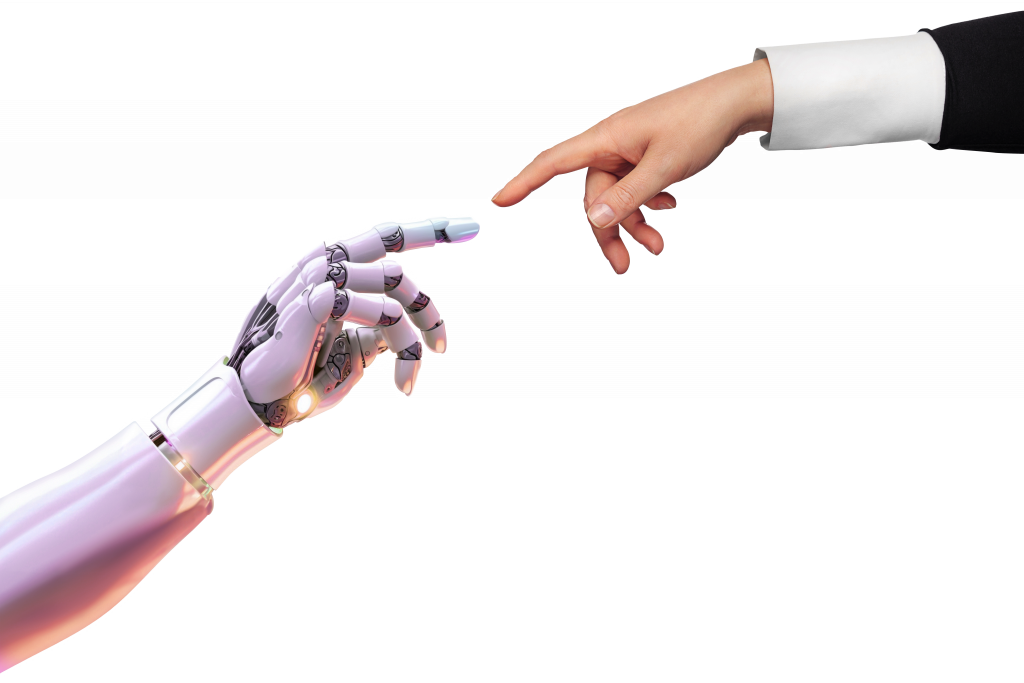Introduction
The integration of artificial intelligence (AI) into enterprise resource planning (ERP) systems has long roused industry expectations. The most common statistics include 65% of CIOs predicting that AI would be integrated into ERP systems by 2022, that over 58% of developers were adding (or had added) AI to their ERP software, while 80% believed part of the software development process was most likely to be replaced by AI or machine learning.
These numbers underscore the transformative potential of AI in the ERP landscape, and it’s true that organizations are continuously optimizing their technology ecosystem by adopting best-of-breed tools like customer relationship management (CRM), ERP, professional services automation (PSA), and eCommerce systems. Yet, despite these significant advancements, they’ve also faced inefficiencies in integrating complex manual processes into technology ecosystems. Navigating this evolving landscape requires technological adaptation and a holistic approach that considers human-centric challenges and the need for expert guidance.
According to Vlad Olano, VP of Operations and Managing Partner at Trajectory:
“2024 marks the year in which we fully embrace generative AI, an advanced technology that can create content, make decisions, and solve problems, to address any existing gaps in business operations. However, it’s paramount to find the right partner who has a deep understanding of both generative AI and your specific business processes, ensuring a seamless integration of a GenAI solution that is tailored to your unique needs.”
Vlad Olano
VP of Operations
Trajectory Group
As the journey of AI and ERP integration unfolds, the industry’s expectations are met with both groundbreaking advancements and newfound challenges. While historically migrating business processes to a network of integrated technology tools to create a technology ecosystem was the end-game, now optimizing and streamlining mature technology ecosystems is the game-changer. In other words, for organizations that have established or mature technology ecosystems, how can they further optimize?
The answer is AI. Let’s begin by considering the role of AI in the context of Operational Improvement initiatives. Then, let’s dig into a specific business case about how AI was leveraged to optimize the inventory management processes for La Bota Roja, a shoe retailer with an established technology ecosystem, that demonstrates the potential operational improvement capabilities of AI.
Enhancing Existing Processes: The Impact of AI on Operational Improvements
The traditional approach to addressing the inefficiencies of manual activities was through automation. Automation tools were rule-based, ensuring consistent, predefined task executions. However, they were mainly reserved for repetitive tasks and fell short when adaptability became necessary.
This limitation sets the stage for AI’s transformative influence.
With AI, we’re ushering in a system that doesn’t just follow instructions but learns, evolves, and adapts from the data it processes. AI systems can analyze vast amounts of data, recognize patterns, and make decisions based on that analysis, sometimes independently.
This ability for AI to self-learn and improve over time makes it a transformative force in business operations. Better yet, AI helps augment and elevate human capabilities.
Going Beyond Automation to Optimize Technology Infrastructure
We recognize that organizations are actively seeking integrated solutions that can cater to multiple needs concurrently. At present, SaaS solutions undeniably serve as the cornerstone for addressing the majority of operational challenges. However, when coupled with GenAI investment, substantial advancements and cost efficiencies can unquestionably be realized. The potential of this technology is beyond question. While most organizations are still in the early stages of their GenAI journeys, we are increasingly gaining insight into effective implementation strategies and pathways to derive tangible value from this technology.
Data Analysis and Insights
By analyzing vast data sets in real-time, AI transforms data into actionable insights for ERP systems. Take, for example, SAP’s S/4HANA platform, which goes far beyond database capabilities.
With AI assistance, this tool processes large volumes of operational and transactional business data in real-time. This allows retailers immediate insights into sales data without the need for quarterly reports or manual reviews. As a result, the platform’s AI capabilities can generate actionable recommendations to highlight trends, recommend stock adjustments, or help build marketing campaigns based on current events.
Predictive Maintenance
With AI, companies can predict equipment failures before they happen, thus optimizing maintenance schedules and reducing operational downtimes. Beyond merely tracking wear and tear, the AI algorithms within the ERP can even discern patterns that may hint at future failures. An ERP might detect slight variations in a machine’s energy consumption, even if they’re within “acceptable” thresholds. Recognizing these anomalies, the system then prompts preemptive maintenance actions.
Demand Forecasting
Traditional ERPs could store and display sales and inventory data, but with AI integration, they now proactively predict future demands by continuously analyzing historical sales data, current inventory levels, market trends, and external factors like social media sentiment.
A fashion brand, for example, might experience unexpected popularity in a specific design due to a celebrity endorsement or a viral social media trend. An AI-enhanced ERP would swiftly recognize this upswing and provide recommendations on adjusting production schedules, reallocating marketing budgets, or even reconfiguring supply chains to capitalize on this trend and maximize profits.
For instance, every year, snowstorms treaten timely deliveries. But with AI, transportation authorities can alert management to help reroute shipments and communicate proactively with customers. This preemptive move can save potential revenue loss and maintain high customer satisfaction.
Consider Amazon, which uses AI-enhanced ERP systems to help cope with the vast logistical demands it faces daily. For instance, during peak sales periods or unforeseen global disruptions, this technology allows Amazon to adjust its supply chain strategies in real-time, ensuring timely deliveries, efficient inventory management, and proactive communication with vendors and customers alike.
Risk Management
AI provides tools for real-time decision-making and risk assessment within ERPs. This could help a financial institution analyze transaction patterns and instantly flag fraudulent activities. For businesses reliant on global supply chains, AI can detect disruptions by assessing factors like sudden spikes in material costs, political instabilities in a supplier’s region, or even adverse weather conditions that might affect transportation.
In a manufacturing setup, AI can monitor machinery performance and maintenance schedules. Hospitals and clinics using ERP systems can use AI to identify unusual patterns, like a sudden increase in flu-like symptoms across patients, alerting health professionals to take preventive measures.
Production and Quality Control
AI-driven ERP systems can also radically improve quality control in manufacturing sectors.
An example of this would be an automobile manufacturer that integrated AI into their ERP system to monitor their production line in real-time. An AI-equipped system could detect a recurring minor defect in one of the assembly components that might go unnoticed by human inspectors. AI’s early detection would allow the manufacturer to address the problem promptly, preventing costly halts in the production line.
Human Resources and Talent Management
Effective talent management is crucial for any organization’s success. While traditional ERP systems track employee data, AI-enhanced systems delve deeper, analyzing patterns and predicting trends.
For instance, a multinational corporation grappling with high turnover rates might turn to AI within its ERP system to evaluate various data points such as employee feedback, work patterns, and engagement metrics. This would allow the company to identify departments with declining morale scores and implement specific interventions, helping improve their turnover rate and boost company morale and profitability.
Real-Time Decision-Making
Real-time data analysis has become a cornerstone of many industries, especially those that depend on split-second decision-making.
For instance, today’s advanced ERP systems with integrated AI can provide instant insights from business data, which was once a time-consuming process. By leveraging AI algorithms, these systems can predict sales trends, monitor inventory in real-time, and even gauge the market demand for a specific product or service. Such capabilities enable businesses to make informed decisions promptly, allowing them to remain agile in a fast-paced market environment.
Compliance and Security
In industries where adherence to regulatory standards is vital, AI-driven ERPs play a critical role. Take a healthcare provider tasked with ensuring compliance with ever-evolving health regulations. By integrating AI, they could go beyond simply storing patient data and start actively monitoring it. The system could immediately flag the issue whenever it detects potential data breaches or non-compliant actions.
Operational Efficiency and AI-Enhanced ERP
The advent of AI in ERP systems has brought about a new level of automation and intelligence in business processes. Automated data entry and processing, once a time-consuming task, is now more efficient and error-free, thanks to AI’s ability to handle large volumes of data with precision. This automation extends to inventory management, where AI’s predictive capabilities enable more accurate forecasting, reducing the risks of overstocking or stock shortages.
Moreover, AI’s role in predictive maintenance is reshaping how businesses manage their assets. By analyzing data patterns, AI can predict equipment failures before they occur, allowing for timely maintenance and reducing downtime. This proactive approach is crucial in industries where equipment reliability is paramount.
Now that the potential operational improvement opportunities that AI facilitates are clear, let’s explore a specific example of a shoe retailer that leveraged AI to solve the bottleneck in its inventory management process.

La Bota Roja Success Story:
Making NetSuite Even More Powerful with AI
La Bota Roja, a prominent retail brand in Chile, has been a household name since the 1940s. Known for its commitment to customer service and quality, the company faced the challenge of trying to streamline its product setup process to keep pace with the evolving retail landscape. It’s holistic technology ecosystem consists of the following elements: NetSuite ERP integrated with a Shopify online storefront using Trajectory’s Initus integration tool, and BSale (an electronic invoicing solution) that integrates with the Chilean national tax system SII (Servicio de Impuestos Internos), to address their end-to-end business process needs.
The Challenge
The core issue for La Bota Roja was how to optimize the manual process of setting up product information in NetSuite efficiently. Their manual methods were not only labor-intensive and prone to error but also produced significant bottlenecks, leading to inefficiencies in inventory management and overall operational productivity. The need for a solution that could automate and expedite this process was critical, especially to maintain the brand’s reputation for reliability in a competitive market.
Trajectory’s Solution
In response, Trajectory developed an innovative solution using Machine Learning to automate the product setup process in NetSuite. The process involved analyzing product images and automatically creating related purchase orders, a significant leap from the manual method.
Trajectory’s team collected extensive data from La Bota Roja’s shoe database and augmented it with information from the internet. This comprehensive dataset was used to train the ML models to identify and classify shoes accurately.
Now when shoes are received at the warehouse, the client team conducts a manual count and captures a picture of each product. They then upload the images and count data into the Initus/NetSuite interface. Initus then uses innovative Machine Learning Models to analyze patterns, shapes, colors, and textures, allowing the models to make precise predictions.
The implementation process is streamlined for NetSuite users, who only need to validate the data instead of manually inputting it. With a simple click, Initus automatically analyzes the shoe based on physical characteristics, classifies the product and creates it in NetSuite following proper accounting and operability configuration (e.g. Matrix items). In addition, the process generates codes, barcodes, configures the product in Shopify and associates the product in both systems to facilitate and streamline integration when the shoe is purchased online. Based on the quantity count, Initus also creates Purchase Orders for each vendor.
Specifically, benefits of the AI efforts included:
- Operational efficiency gains: The automation of the product setup process led to a significant reduction in manual labor and errors, enhancing operational efficiency.
- Rapid implementation timeline: The solution was implemented within four months, a testament to the efficiency and effectiveness of AI integration in ERP systems.
- Continuous improvement tool: The AI system evolves with the business, continuously improving and adapting to changing needs.
“The utilization of machine learning enables us to streamline various aspects of our organization, such as product set-up, procurement, and webstore integration. This optimization breakthrough eliminates the need for manual tasks, minimizes the risk of errors and delays, and ultimately enhances efficiency within our organization.”
Ramiro Mendez
General Manager
La Bota Roja
Navigating the future of AI-ERP with Trajectory
Our approach is characterized by appropriately customized solutions, proactive innovation, and commitment to long-term partnership. We transform businesses. The success stories, like that of La Bota Roja, are a testament to our ability to turn challenges into opportunities for growth and innovation. As organizations navigate the complexities of AI and ERP, partnering with Trajectory provides a trusted hand, ensuring technical precision and confidence that the business process transformation is in expert hands. By employing a business-first approach, we prioritize understanding client businesses, refining their processes, and mapping out an exhaustive solution roadmap. If you’re ready to embrace the future of AI-ERP integration with a trusted guide by your side, contact Trajectory today.
Adapting to the evolving landscape where AI intersects with ERP systems requires more than just technological readiness; it mandates a holistic organizational shift. The challenges aren’t solely technological; the’re deeply human-centric and rooted in workforce adaptability, change management, and guidance through unfamiliar territory. This is where Trajectory’s expertise become indispensable. Trajectory recognizes that successful AI and ERP integration goes beyond mere amalgamation of systems. In other words, mere technology implementation doesn’t guarantee success. Trajectory excels at helping clients successfully achieve a balance of optimized technology ecosystems, process improvements and a positive organizational mindset shift around the new technology adoption that facilitates successful AI-driven optimization initiatives.
Citations
1. https://hbr.org/2023/03/how-ai-is-helping-companies-redesign-processes
2. https://peoplemanagingpeople.com/strategy-operations/3-examples-of-erps/#3-real-life-erp-system-examples-from
3. https://trajectoryinc.com/cases/la-bota-roja-ai-case-study/

Alex Olano
CEO, Managing Partner
Throughout his 18-year career at Trajectory, Alex’s role has ranged from managing teams and projects to running the professional services organization, and mentoring Trajectory’s growing number of Consultants. Currently, he leads the Trajectory Team and invests his time ensuring Private Equity avoids key technology risks during their transactions. Alex understands technology is simply the means for achieving business goals. He has guided Trajectory’s organization to form its own version of Operational Improvement, which combines industry and business acumen with highly effective technology implementation capabilities. Prior to joining Trajectory Group, Alex spent 10 years in business consulting, systems advisory, and SAP implementations with IBM Global Services and Accenture.



